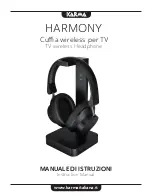
41113915
Rev 0.3
June 17, 2020
12
AirPrime EM9190 Hardware Integration Guide
RF Specifications
The Tx power and corresponding broadband noise of other wireless devices may overload or
increase the noise floor of the module’s receiver, resulting in Rx desense.
T
he severity of this interference depends on the closeness of the other antennas to the module’s
antenna. To determine suitable locations for each wireless device’s antenna, thoroughly evaluate your
host device’s design.
3.4.2.
Host-generated RF Interference
All electronic computing devices generate RF interference that can negatively affect the receive
sensitivity of the module.
Proximity of host electronics to the antenna in wireless devices can contribute to decreased Rx
performance. Components that are most likely to cause this include:
Microprocessor and memory
Display panel and display drivers
Switching-mode power supplies
3.4.3.
Device-generated RF Interference
The module can cause interference with other devices. Wireless devices such as AirPrime embedded
modules transmit in bursts (pulse transients) for set durations (RF burst frequencies). Hearing aids
and speakers convert these burst frequencies into audible frequencies, resulting in audible noise.
3.4.4.
Methods to Mitigate Decreased Rx Performance
It is important to investigate sources of localized interference early in the design cycle. To reduce the
effect of device-generated RF on Rx performance:
Put the antenna as far as possible from sources of interference. The drawback is that the module
may be less convenient to use.
Shield the host device. The module itself is well shielded to avoid external interference. However,
the antenna cannot be shielded for obvious reasons. In most instances, it is necessary to employ
shielding on the components of the host device (such as the main processor and parallel bus)
that have the highest RF emissions.
Filter out unwanted high-order harmonic energy by using discrete filtering on low frequency lines.
Form shielding layers around high-speed clock traces by using multi-layer PCBs.
Route antenna cables away from noise sources.
3.4.5.
Radiated Spurious Emissions (RSE)
When designing an antenna for use with AirPrime embedded modules, the host device with an
AirPrime embedded module must satisfy any applicable standards/local regulatory bodies for radiated
spurious emission (RSE) for receive-only mode and for transmit mode (transmitter is operating).
Note that antenna impedance affects radiated emissions, which must be compared against the
conducted 50
Ω
emissions baseline. (AirPrime embedded modules meet the 50
Ω
conducted emissions
requirement.)
3.5.
Radiated Sensitivity Measurement
A wireless host device contains many noise sources that contribute to a reduction in Rx performance.










































